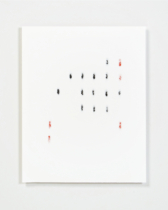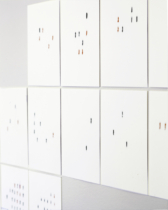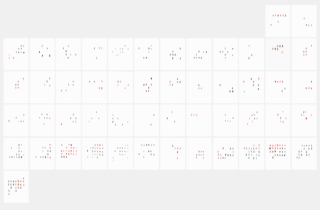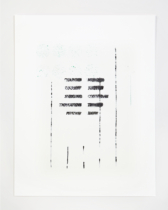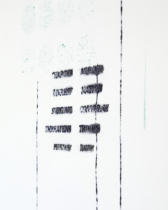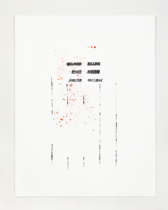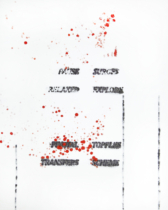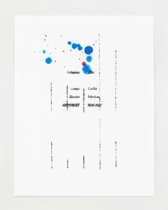Rita Maas’ (born New York, lives Chappaqua, NY) conceptually-driven work playfully constructs imagery using photographic materials and processes to explore the gap between representation and abstraction . Maas received a BFA in photographic studies from the School of Visual Arts, New York and an MFA in visual arts at Lesley University College of Art and Design, Cambridge, MA. Maas’ work was most recently exhibited at Filter Photo, Chicago and Klompching Gallery, Brooklyn, NY. Maas was awarded an honorable mention for the INFOCUS Sidney Zuber Photography Award, Phoenix Art Museum, AZ. Maas’ work is included in the collections of The Museum of Fine Arts, Houston, TX; Archive 92, New York; Center for Creative Photography, Tucson, AZ; Griffin Museum of Photography, Winchester, MA.
Statement from the Artist:
I have long been interested in how news is told and I often feel saturated by the data and statics that pour over me day after day. As one day blurs into the next, comprehension often seems just beyond my grasp. “Today I Got Up” is the latest iteration of the ongoing project “Residual Ink Drawings”, that utilizes reclaimed ink from empty ink jet cartridges. This new project chronicles the front page of The New York Times, noting the font size of the main headline. This work has two parts: a monthly calendar and a weekly rendering. The time covered is November 2016 through January 2021 for the monthly series. There will be 51 prints when complete. The weekly series covers November 19, 2019 through January 21, 2021. There will be 53 prints when complete.
In the monthly series, a tally mark is hand-painted with black ink each day the main headline appears in all caps and exceeds 30 points, and in red when it exceeds 36 points. If neither occurs, no mark is made.
The second part examines a week of headlines. Using the same criteria, I select two words from each headline and place on a page, reminiscent of concrete poetry. The ink bleeds and soaks through the paper, rendering the words at times unreadable.
In both cases, ink is applied from the rear (uncoated) side of photo rag paper. The coated side resists the ink and exhibits a blurred trace of the mark. This application mimics and visualizes how our daily experiences are layered, absorbed and stored as we wait for the future to arrive.
